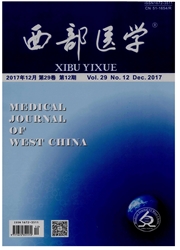

 中文摘要:
中文摘要:
目的探讨新疆维吾尔族女性压力性尿失禁(SUI)的患病率及危险因素。方法2011年4至8月多阶段分层随机抽样方法抽取新疆喀什地区部分城市和农村中20~85岁的维吾尔族女性3403例进行问卷调查。问卷的设计参考女性下尿路症状国际尿失禁标准问卷(IQ—FLUTS)和自制问卷调鱼表,将SUI危险因素进行单因素和多因素分析。结果维吾尔族女性尿失禁发生率为41.96%(1428/3403),SUI发生率为28.21%(960/3403)。单因素分析结果显示,年龄、体质指数、腰臀比、分娩方式、新生儿出生体质量、会阴侧切、绝经、产次、盆腔器官脱垂、慢性盆腔痛、子宫全切除、高血压、呼吸系统疾病为SUI发生的危险因素。多因素回归分析显示,SUI发生的独立危险因素为体质指数(OR=1.672,95%CI为1.082—2.584)、产次(OR=5.092,95%CI为3.889~6.666)、新生儿出生体质量(OR=5.623,95%C1为3.335~9.480)、分娩方式(OR=2.247,95%CI为1.634~3.090)、会阴侧切(OR=4.448,95%C1为3.112~6.357)、绝经(OR=5.145,95%C1为3.613~7.328)、慢性盆腔痛(OR=3.869,95% CI为1.051~14.250)、盆腔器官脱垂(OR=3.501,95%CI为2.508~4.887)。结论新疆维吾尔族女性SUI的发生与多种因素有关,尤其与肥胖、产次及分娩方式等产科闪素紧密相关。
 英文摘要:
英文摘要:
Objective To evaluate the prevalence and associated risk factors of stress urinary incontinence(SUI) in adult women in Xinjiang. Methods In the cross-sectional study, 3403 Uygur women aged over 20 years were interviewed through a questionnaire of International Consultation on Incontinence Questionnaire Female Lower Urinary Tract Symptoms Module (ICIQ-FLUTS) and the adult questionnaire were used in our research. All parts of the content were according to the characteristics of women in Xinjiang and the purpose of our research. The risk factors were studied by Logistic regression analysis. Results The prevalence of urinary incontinence (UI) was 41.96% (1428/3403) and 28.21% (960/3403) of SUI in Uygur women. In multivariate logistic regression analysis, the risk factors of SUI are body mass index ( OR = 1. 672, 95% CI: 1. 082 - 2. 584 ), parity ( OR = 5. 092, 95% CI: 3. 889 - 6. 666 ), neonatal birth weight ( OR =5. 623, 95% CI:3. 335 -9. 480) , the mode of delivery ( OR =2. 247, 95% CI:I. 634 -3. 090), the lateral episiotomy ( OR = 4. 448, 95% (3:3.112 - 6. 357 ), menopause ( OR = 5. 145, 95% CI: 3. 613 - 7. 328), chronic pelvic pain ( OR = 3. 869, 95% CI: 1. 051 - 14. 250), pelvic organ prolapse ( OR = 3. 501, 95% C1:2. 508 - 4. 887 ). Conclusion The incidence of SUI is related with multiple factors, especially with obesity and the obstetric factor.
 同期刊论文项目
同期刊论文项目
 同项目期刊论文
同项目期刊论文
 期刊信息
期刊信息
